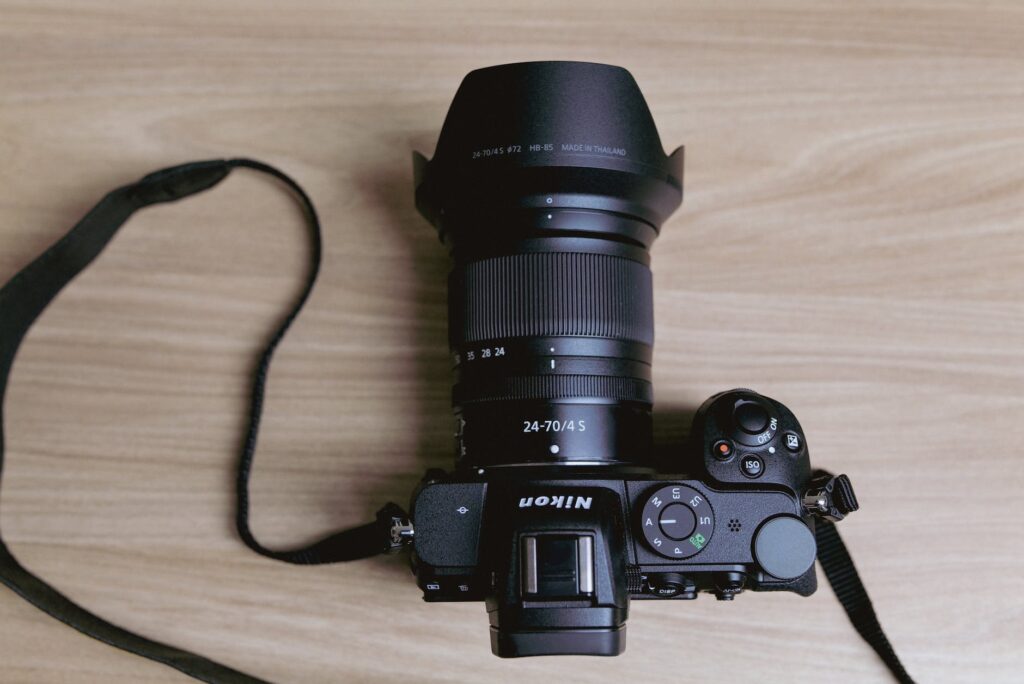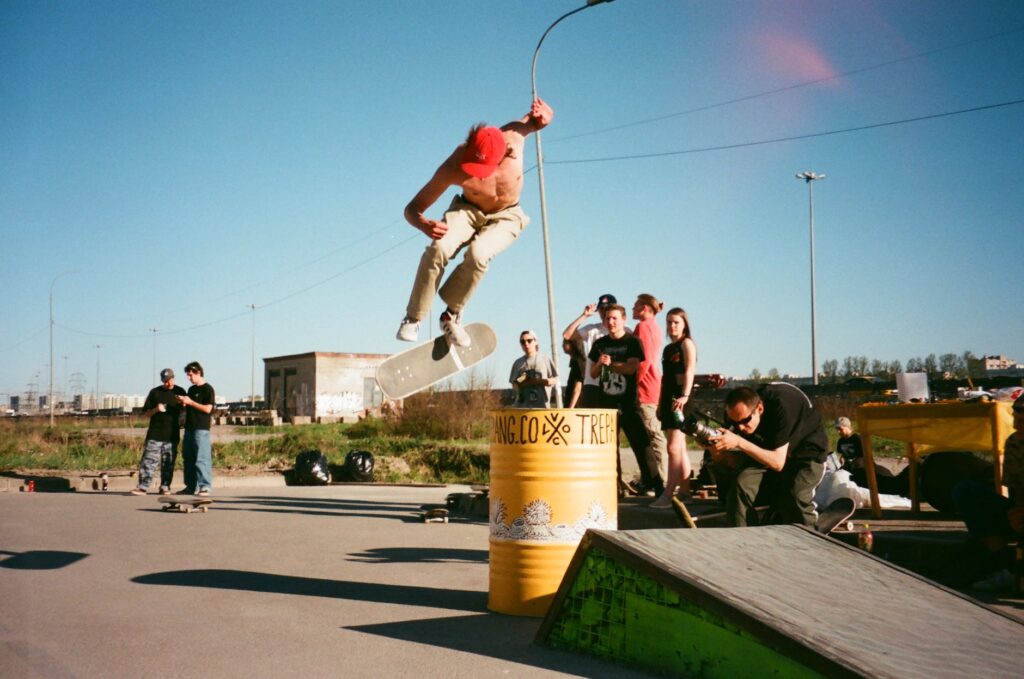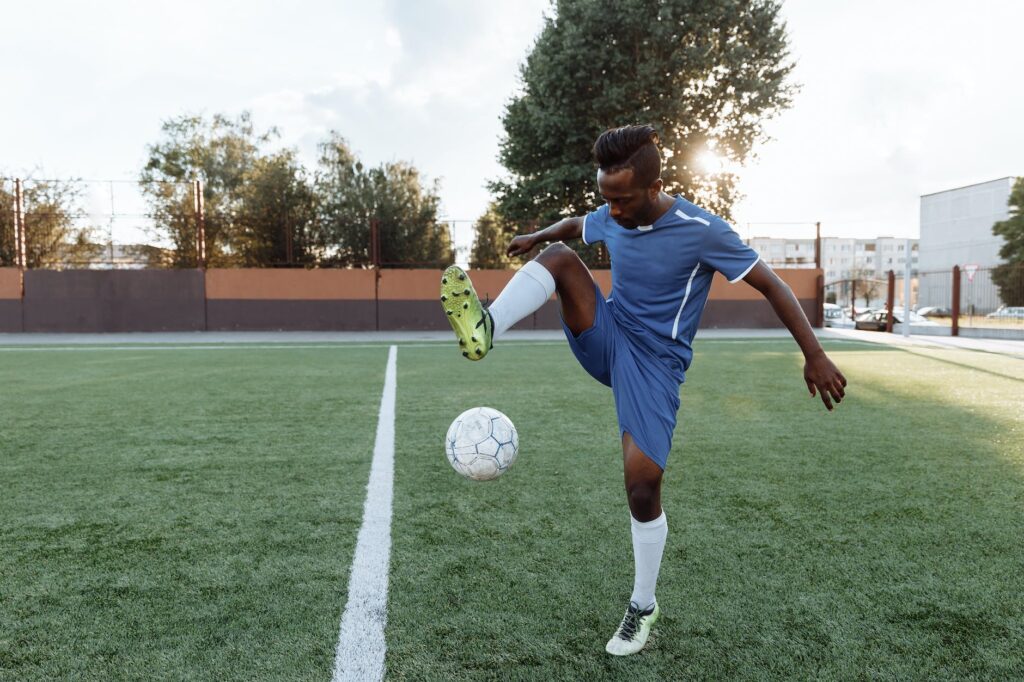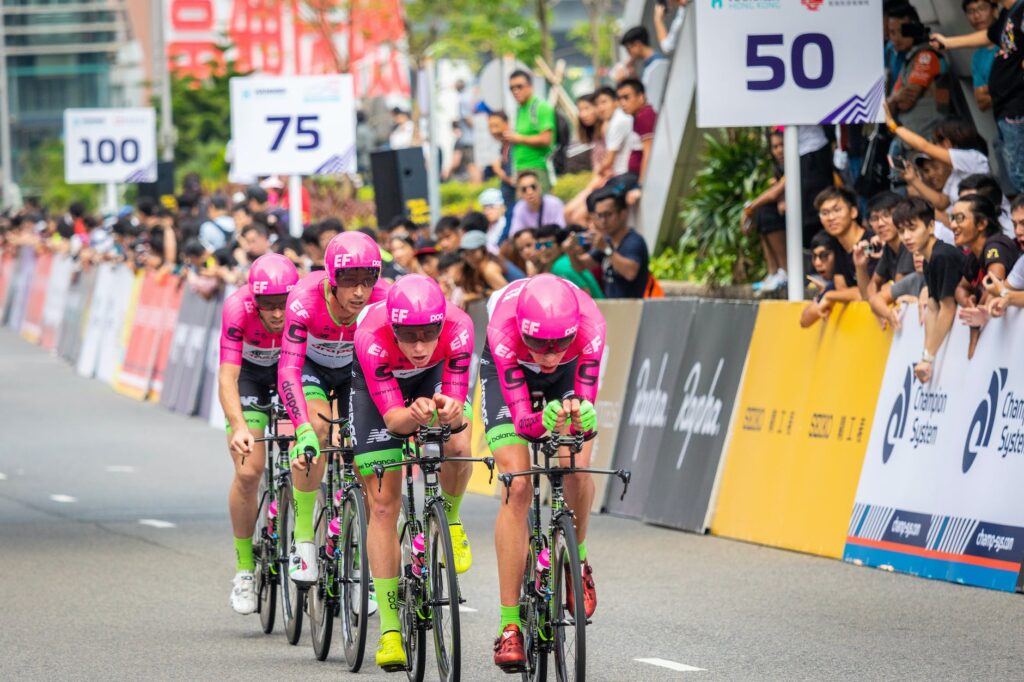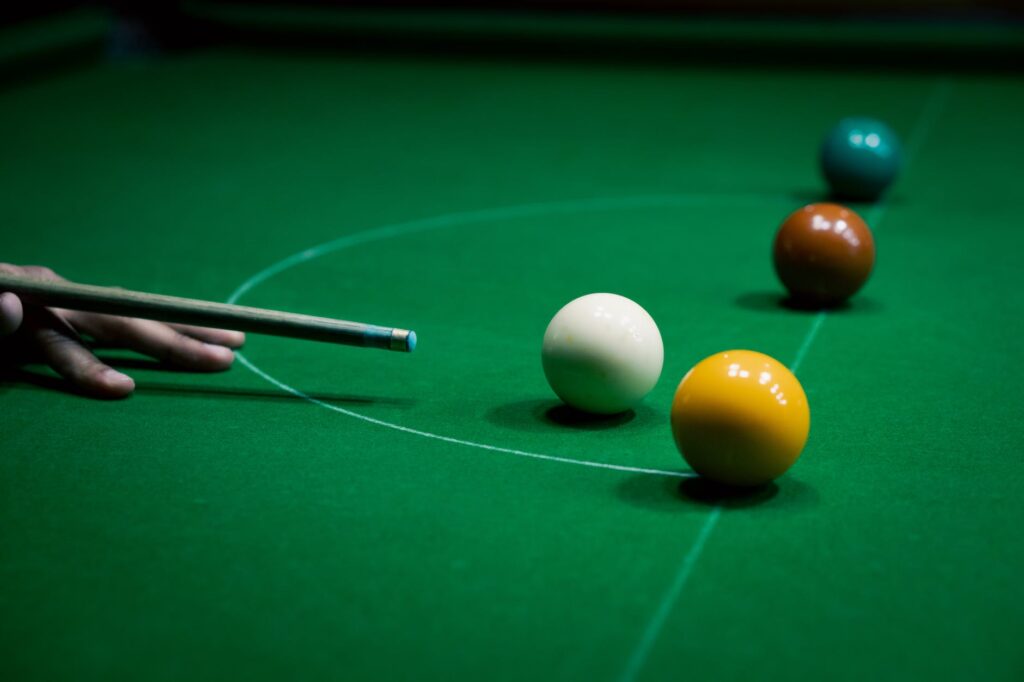Welcome to the ultimate guide for aspiring sports photographers! In this comprehensive resource, we will delve into the world of sports photography, covering essential topics to help you capture stunning and impactful images of athletes in action.
Whether you are a seasoned professional seeking to refine your skills or an aspiring photographer eager to enter the exciting realm of sports photography, we’ve got you covered.
From understanding camera settings and shooting modes to mastering panning and tracking techniques, and polishing your images through post-processing, this guide offers valuable insights to elevate your sports photography game.
Let’s embark on an exhilarating journey through the lens of sports photography!
The Essence of Camera Settings in Sports Photography
This article aims to be a comprehensive guide, assisting sports photographers of all levels in their journey towards mastering camera settings for sports photography.
I will delve into the essential choices photographers face – the decision between shooting in RAW or JPEG format and the selection of the most suitable shooting mode for capturing the diverse range of sports events.
By the end of this article, you will have a deeper understanding of how these choices can impact the quality and emotive power of your sports images and videos, equipping you with the tools to produce outstanding visual content that resonates with audiences worldwide.
Decoding RAW and JPEG Formats
Unleashing the Potential of RAW Format
RAW format is the holy grail of professional photographers, offering unparalleled control over image quality and post-processing possibilities.
- Unlike JPEG, which is a compressed and processed format, RAW captures the raw sensor data directly from the camera’s image sensor, preserving all the information collected during the exposure.
This means that RAW files contain vast amounts of unaltered data, including color information, brightness, and dynamic range, giving photographers a digital negative with remarkable flexibility during post-production.
Advantages of Shooting in RAW for Sports Photography
Preservation of Image Quality
RAW format retains all the details and subtleties of the image, avoiding the loss of information that occurs during JPEG compression. This ensures that every pixel of your sports image is captured with utmost clarity, allowing for superior sharpness and finer gradations.
Extensive Post-Processing Flexibility
Sports photography often involves challenging lighting conditions, where quick adjustments to exposure, white balance, and color correction become critical. RAW files enable photographers to fine-tune these settings with precision, recovering highlights and shadows and optimizing the image to meet their vision.
Noise Reduction without Compromising Quality
High ISO settings are often necessary in sports photography to maintain fast shutter speeds and freeze action. RAW format grants greater control over noise reduction, allowing photographers to strike a balance between suppressing noise and retaining image details.
Disadvantages of RAW Format for Sports Photography
Larger File Size
RAW files are significantly larger compared to JPEG, demanding more storage space on memory cards and hard drives. This can slow down the continuous shooting speed of the camera, affecting the ability to capture a rapid sequence of action shots.
Slower Workflow
The extensive post-processing capabilities of RAW require additional time and expertise during the editing phase. For photographers seeking a rapid turnaround for delivering images, JPEG might offer a more efficient workflow.
The Appeal of JPEG for Sports Photography
JPEG is a widely-used format known for its convenience, smaller file sizes, and immediate usability. In sports photography scenarios where speed and efficiency are crucial, shooting in JPEG might be a practical choice.
Advantages of Shooting in JPEG for Sports Photography
Smaller File Size
JPEG files are significantly smaller due to compression, making them ideal for photographers who require more images to fit on memory cards or need to conserve storage space.
Faster Shooting Speed
With smaller file sizes, cameras can buffer and write JPEG files faster, enabling continuous shooting at higher frames per second (FPS) and ensuring you capture every split-second moment during fast-paced sports events.
Ready-to-Use Images
JPEG files are processed in-camera, resulting in images that are immediately viewable and shareable without the need for post-processing. This is advantageous when time is of the essence, such as for live event coverage or quick social media sharing.
Limitations of JPEG Format for Sports Photography
Loss of Image Data
JPEG compression discards some image information during processing, leading to a loss of fine details and reduced dynamic range. This can be particularly noticeable in high-contrast scenes.
Limited Post-Processing Flexibility
Since JPEG files are already processed in-camera, photographers have less flexibility to adjust exposure, white balance, and other parameters during post-processing. Any adjustments made to JPEG files might lead to image degradation.
RAW vs JPEG Comparison Table:
| Aspect | RAW Format | JPEG Format |
|---|---|---|
| Image Quality | Lossless compression, more details | Lossy compression, some details lost |
| Post-processing | Greater flexibility | Limited post-processing capabilities |
| File Size | Larger file size | Smaller file size |
| Shooting Speed | Slower | Faster |
| Suitable for | Professional photographers, extensive post-processing | Enthusiasts, casual photographers with less editing needs |
Choosing the Right Format for Sports Photography
When to Shoot in RAW
Selecting the RAW format is beneficial for sports photographers who prioritize the utmost image quality and have the time and expertise for extensive post-processing. Consider shooting in RAW in the following situations:
Critical Sporting Events
For high-stakes events or once-in-a-lifetime moments, capturing the finest details and preserving the best image quality becomes paramount.
Challenging Lighting Conditions
Sports events can take place in various lighting conditions, from bright sunlight to dimly lit indoor arenas. RAW format allows for better adjustments and corrections in post-processing, ensuring well-exposed images in any situation.
Artistic Control
If you seek creative freedom and desire to craft unique interpretations of your sports images during post-processing, RAW format provides the canvas to explore your artistic vision.
When to Opt for JPEG
JPEG format serves sports photographers who prioritize speed, convenience, and immediate usability of their images. Consider shooting in JPEG in the following scenarios:
Continuous Shooting
When capturing a rapid sequence of sports action, such as in motorsports or athletics, shooting in JPEG with its faster writing speeds allows you to keep up with the action without slowdowns.
Event Coverage with Quick Turnaround
For covering live sports events or press conferences, where images need to be delivered quickly, JPEG offers a ready-to-use format that can be shared immediately without post-processing delays.
Limited Post-Processing
If you prefer minimal post-processing or have limited editing resources, JPEG’s in-camera processing ensures ready-to-share images that still meet the demands of sports photography.
The Best of Both Worlds: RAW+JPEG
Many modern cameras offer the option to shoot in both RAW and JPEG simultaneously, providing the benefits of both formats in a single capture. This can be an ideal choice for photographers who desire the flexibility of RAW for critical shots while maintaining the convenience of immediately usable JPEGs for quick sharing or previewing.
Recommended Camera Settings for RAW and JPEG Shooting
Regardless of the format chosen, certain camera settings are fundamental for achieving outstanding sports images. Set your camera to the highest possible resolution and utilize the fastest continuous shooting mode available to capture every thrilling moment.
Additionally, consider enabling a large and fast memory card to accommodate the continuous shooting bursts.
Archiving and Workflow Considerations
When shooting in RAW, be prepared to invest in ample storage solutions, as the larger file sizes demand more memory capacity.
Back up your RAW files regularly to prevent data loss.
For JPEG shooters, ensure your camera’s settings, such as white balance and picture style, are appropriately adjusted in-camera to deliver the desired results without relying heavily on post-processing.
Conclusion: RAW vs JPEG
Understanding the nuances of RAW and JPEG formats empowers sports photographers to make well-informed decisions based on their specific needs and desired outcomes.
Whether you choose the flexibility of RAW for artistic control or the efficiency of JPEG for rapid event coverage, your camera settings will shape the essence of your sports photography journey.
In the next section, we shall explore the diverse shooting modes available and determine the ideal mode for capturing sports action with precision and finesse.
Mastering Shooting Modes for Sports Action
In the dynamic world of sports, where athletes move swiftly and emotions run high, selecting the right shooting mode is crucial to capturing those fleeting moments with precision and clarity.
Different shooting modes offer varying levels of control over key camera settings, such as shutter speed and aperture, influencing the outcome of your sports images.
Let’s explore the most common shooting modes and determine which mode best suits various sports scenarios.
Shutter Priority Mode (Tv or S)
In Shutter Priority mode, you take control of the shutter speed while the camera adjusts the aperture to achieve a proper exposure. This mode is ideal for freezing fast-paced sports action, ensuring sharp and blur-free images of athletes in motion.
Advantages of Shutter Priority Mode
- Freezing Fast Action: Shutter Priority mode allows you to set a high shutter speed, such as 1/1000 or 1/2000 seconds, to capture crisp, freeze-frame shots of athletes in action.
- Motion Blur for Dramatic Effect: Alternatively, using a slower shutter speed can introduce intentional motion blur, adding a sense of dynamism and drama to your images.
- Easy Adjustment on the Fly: Shutter Priority mode enables quick adjustments to shutter speed with the camera automatically adjusting the aperture for proper exposure, making it perfect for rapidly changing sports environments.
When to Use Shutter Priority Mode
- Athletics and Track Events: Capture athletes sprinting, jumping, or performing high-speed maneuvers with precise frozen moments.
- Fast-Moving Team Sports: Freeze the movements of soccer players, basketball dunks, or hockey puck action with quick shutter speeds.
Aperture Priority Mode (Av or A)
Aperture Priority mode grants you control over the lens aperture while the camera sets the shutter speed for proper exposure. This mode is instrumental in determining the depth of field in your sports images.
Advantages of Aperture Priority Mode
- Control over Depth of Field: Adjusting the aperture allows you to control the amount of background blur (bokeh) and keep the main subject in sharp focus, even in chaotic sports environments.
- Creative Framing: Wider apertures (lower f-stop values) can isolate the athlete from the background, emphasizing their presence and creating eye-catching compositions.
- Adaptability to Lighting Conditions: In varying lighting situations, adjusting the aperture can help manage exposure and maintain consistent image quality.
When to Use Aperture Priority Mode
- Portraits of Individual Athletes: Create captivating portraits of athletes with a shallow depth of field, making the subject stand out from the background.
- Single or Group Celebrations: Use wider apertures to capture emotional moments with the focus on the jubilant athletes and fans.
Manual Mode (M)
In Manual mode, you take full control over both the shutter speed and aperture, providing the utmost creative freedom and precision.
Advantages of Manual Mode
- Ultimate Control: Manual mode gives you complete authority over the exposure, allowing you to fine-tune settings based on your creative vision and the specific lighting conditions.
- Consistency in Exposure: By manually adjusting both shutter speed and aperture, you can maintain consistent exposure across multiple shots, ensuring a cohesive look in a series of images.
- Challenging Lighting Situations: When dealing with tricky lighting scenarios, such as strong backlighting or mixed light sources, manual mode provides the ability to make precise adjustments for the perfect shot.
When to Use Manual Mode
- Sports Events with Constant Lighting: In scenarios where lighting remains consistent throughout the event, such as indoor sports or stadium games with controlled lighting.
- Complex Sports Setups: When capturing multiple athletes in varying distances from the camera, manual mode ensures consistent exposure for all subjects.
Sports Mode (Action or Sports Icon)
Sports mode is a specialized shooting mode found in many modern cameras, specifically designed to optimize settings for capturing fast-moving subjects.
Advantages of Sports Mode
- Fast Autofocus and Shutter Speed: Sports mode enhances autofocus capabilities and sets faster shutter speeds, ensuring you don’t miss critical moments during sports action.
- Beginner-Friendly: This mode simplifies the shooting process, making it ideal for novice sports photographers seeking immediate results without extensive manual adjustments.
- Suitable for a Wide Range of Sports: Sports mode adapts well to various sports events, making it a versatile option for general sports photography.
When to Use Sports Mode
- Casual Sports Photography: For photographers looking to capture sports events without delving into advanced settings, sports mode offers convenience and ease of use.
- Documenting General Sporting Events: In non-critical situations, where the primary goal is to capture moments without the need for extensive creative control.
Recommended Shooting Mode Table for Different Sports
| Sport | Recommended Shooting Mode | Advantages |
|---|---|---|
| Athletics | Shutter Priority (Tv/S) | Freeze fast sprints and high jumps |
| Basketball | Aperture Priority (Av/A) | Isolate players with pleasing background blur |
| Football | Shutter Priority (Tv/S) | Capture the intensity of tackles and goal celebrations |
| Motorsports | Manual Mode (M) | Control exposure for fast-moving cars |
| Swimming | Sports Mode (Action/Sports Icon) | Fast autofocus for capturing quick movements |
Conclusion: Shooting Mode
Choosing the right shooting mode is essential for capturing stunning sports images that encapsulate the essence of athletic prowess and emotional highs.
Whether you prioritize freezing fast action with Shutter Priority, crafting artistic compositions with Aperture Priority, or embracing complete control with Manual mode, each shooting mode offers unique benefits for diverse sports scenarios. Additionally, the Sports mode serves as a beginner-friendly option for capturing fast-paced action without extensive adjustments.
By understanding the nuances of each mode and experimenting with their applications, you can elevate your sports photography to new heights of excellence.
Insights from the Pros
Professional sports photographers are skilled in capturing the essence of sports events, freezing fleeting moments of triumph, agony, and pure athleticism.
Behind their remarkable images lie a combination of technical expertise, experience, and a deep understanding of camera settings.
In this section, we’ll explore the camera settings and techniques favored by professionals, providing valuable insights to elevate your sports photography game.
Optimal Shutter Speeds for Different Sports
One of the critical elements in sports photography is selecting the right shutter speed to freeze or convey motion effectively. Professional sports photographers often tailor their shutter speeds to match the pace and intensity of various sports.
Sports with High Speeds and Quick Movements
- Motorsports (Car Racing, MotoGP): Professionals often use shutter speeds between 1/1000 to 1/4000 seconds to freeze fast-moving vehicles and riders, capturing the essence of speed and adrenaline.
- Athletics (Sprinting, Hurdles): To capture athletes at their peak performance, shutter speeds of 1/1000 to 1/2000 seconds ensure sharp images, freezing the power and intensity of athletes in motion.
Sports with Graceful Movements and Expressions
- Gymnastics: Shutter speeds around 1/500 to 1/1000 seconds are employed to freeze gymnasts’ graceful movements and maintain sharpness during complex maneuvers.
- Figure Skating: With its artistic flair, figure skating requires shutter speeds of approximately 1/500 to 1/800 seconds to capture skaters’ elegant poses and expressions.
Ideal Aperture Settings for Sports Photography
Aperture plays a crucial role in sports photography, determining the depth of field and background blur. Professionals strategically adjust their aperture to emphasize the subject while minimizing distractions.
Isolating the Subject from the Background
- Large Aperture (Lower f-stop value, e.g., f/2.8 to f/4.0): In sports such as basketball or soccer, professionals use wide apertures to isolate the athlete from the background, making the subject stand out.
Including the Surroundings for Context
- Moderate Aperture (e.g., f/5.6 to f/8.0): For sports like football or rugby, where team dynamics and interactions are crucial, moderate apertures help include the surroundings, providing context to the action.
Autofocus Settings for Precise Action Shots
Achieving sharp focus in fast-paced sports events can be challenging, but professionals employ advanced autofocus settings to ensure precision and accuracy.
Continuous Autofocus (AI Servo, AF-C)
- Professionals often use Continuous Autofocus mode, tracking the subject’s movements continuously. This mode ensures the focus remains sharp even as the athlete moves within the frame.
Customizable Autofocus Points
- Utilizing multiple and customizable autofocus points enables photographers to target specific areas of the frame, ensuring that the subject remains in focus throughout the action.
Selecting the Optimal ISO for Sports Events
ISO settings influence the camera’s sensitivity to light, impacting image quality, and noise. Professionals adjust ISO based on the available lighting conditions.
Daytime Sports Events
- In outdoor daytime events, such as soccer matches or marathons, professionals opt for lower ISO settings (e.g., ISO 100 to 400) to maintain maximum image quality and reduce noise.
Indoor and Low-Light Sports
- For indoor sports, such as basketball or gymnastics, or sports during twilight hours, higher ISO settings (e.g., ISO 800 to 3200) are employed to compensate for lower light levels while maintaining fast shutter speeds.
Burst Mode and Timing
Capturing the decisive moment often requires impeccable timing. Professional sports photographers utilize burst mode to fire a series of shots, ensuring they don’t miss critical moments.
Predicting the Action
- Experienced sports photographers anticipate crucial moments, such as a gymnast’s mid-air flip or a basketball player’s slam dunk, and engage burst mode to capture the entire sequence.
Editing and Culling
- Professionals extensively edit and cull their images to select the best shots from the burst sequence, discarding duplicates or less compelling frames.
Image Stabilization for Long Lenses
When using telephoto lenses for distant sports events, image stabilization is vital to counteract camera shake and achieve sharp images.
Optical Image Stabilization (OIS)
- Many professional lenses are equipped with Optical Image Stabilization, which compensates for camera shake, allowing photographers to shoot at slower shutter speeds without compromising sharpness.
Monopods and Tripods
- In situations where longer lenses are used, professionals often rely on monopods or tripods to stabilize the camera and lens, especially during prolonged shoots.
As we delve deeper into the art of sports photography, the next section will focus on additional techniques, including panning and tracking, to add dynamism and drama to your sports images.
Elevating Sports Photography with Panning and Tracking
Panning and tracking techniques are powerful tools that can add a sense of dynamism and drama to your sports images, transforming them from static shots to captivating visual narratives.
These techniques involve intentional camera movements that keep the subject in focus while blurring the background, effectively conveying the sensation of speed and motion.
In this section, we’ll explore how to master panning and tracking for remarkable sports photography.
Panning Technique: Capturing Motion in a Still Frame
Panning is a technique where the photographer follows the subject’s movement with the camera while using a slow shutter speed. This results in a sharp subject against a blurred background, effectively conveying a sense of motion and speed.
Mastering the Panning Technique
- Select the Right Shutter Speed: Start with a relatively slow shutter speed, around 1/30 to 1/60 seconds, depending on the subject’s speed. Adjust as needed to achieve the desired effect.
- Choose the Correct Focus Mode: Switch your camera to Continuous Autofocus (AI Servo or AF-C) to keep the subject in focus as it moves.
- Follow the Subject Smoothly: Anticipate the subject’s path and pan the camera smoothly in sync with its movement. Use your upper body to pivot, keeping the camera steady.
- Practice and Patience: Panning takes practice, so don’t be discouraged if your initial attempts aren’t perfect. Be patient, experiment with different shutter speeds, and learn from each shot.
Tracking Technique: Keeping the Subject in Sharp Focus
Tracking involves following the subject’s movement with continuous autofocus, keeping it in sharp focus while it moves within the frame.
Mastering the Tracking Technique
- Select the Appropriate Focus Mode: Switch to Continuous Autofocus (AI Servo or AF-C) to enable the camera to track the subject continuously.
- Use Burst Mode: Engage burst mode to capture a series of shots, ensuring you have a variety of images to choose from.
- Maintain the Subject in Focus: Keep the subject in the center of the frame or on a selected autofocus point as it moves, allowing the camera’s autofocus to do its job.
- Be Mindful of Composition: Pay attention to the overall composition of the image, ensuring the subject has enough space to move within the frame.
Sports and Scenarios Ideal for Panning and Tracking
Panning and tracking techniques work exceptionally well in various sports, enhancing the visual impact of your images.
Ideal Sports for Panning
| Sport | Key Features | Tips |
|---|---|---|
| Motorsports | High-speed vehicles, dynamic tracks | Position yourself strategically for best angles |
| Cycling | Fast-paced pelotons or individual cyclists | Use a tripod or monopod for stability |
| Horse Racing | Galloping horses, colorful jockeys | Experiment with different shutter speeds |
Ideal Sports for Tracking
| Sport | Key Features | Tips |
|---|---|---|
| Soccer | Players moving across the field, dramatic goal shots | Use continuous autofocus to follow the action |
| Basketball | High-flying slam dunks, fast breaks | Utilize burst mode for multiple action shots |
| Athletics | Sprinters and long jumpers in motion | Pre-focus on the anticipated point of action |
Conclusion: Panning and tracking
Panning and tracking techniques are powerful tools in a sports photographer’s arsenal, enabling the capture of dynamic and visually striking images.
By mastering the art of panning and tracking, you can convey a sense of motion, speed, and excitement in your sports photography. As you experiment with these techniques, remember that practice and patience are key to achieving exceptional results.
Embrace the challenge, refine your skills, and watch as your sports images come alive with dynamism and drama.
Enhancing Your Sports Images in Post-Processing
Post-processing is an essential step in the sports photography workflow, where you can fine-tune and polish your images to achieve the desired look and impact. In this section, we’ll explore post-processing tips and techniques to take your sports photography to new heights of visual excellence.
The Power of RAW Editing
When shooting in RAW format, post-processing becomes a creative playground, allowing you to bring out the full potential of your sports images.
White Balance Adjustment
- Set the correct white balance to ensure accurate colors and eliminate unwanted color casts. Adjusting white balance can significantly impact the mood and atmosphere of your sports images.
Exposure Adjustment
- Fine-tune exposure to enhance the overall brightness and contrast of the image. Correct underexposed or overexposed areas to reveal more details and improve the visual appeal.
Highlights and Shadows Recovery
- Use highlights and shadows sliders to recover details in overexposed or underexposed regions, particularly in sports images with challenging lighting conditions.
Clarity and Contrast
- Enhance the clarity and contrast to add definition and depth to your sports subjects, making them stand out from the background.
Sharpening and Noise Reduction
Sports photography often involves high-speed action, which can result in slightly blurry images or noise at higher ISO settings. Proper sharpening and noise reduction techniques can significantly improve image quality.
Sharpening
- Use selective sharpening to focus on essential elements, such as athletes or sports equipment, while avoiding sharpening artifacts in the background.
Noise Reduction
- Apply noise reduction to minimize graininess, especially in images taken at higher ISO settings. Balance noise reduction to maintain image sharpness.
Cropping and Composition
In post-processing, you have the opportunity to fine-tune composition and cropping to achieve stronger visual impact.
Rule of Thirds
- Align key sports elements along the imaginary gridlines of the rule of thirds for balanced and visually appealing compositions.
Crop for Emphasis
- Crop your sports images to highlight the main subject, removing distractions and bringing attention to the essential elements.
Aspect Ratios
- Consider experimenting with different aspect ratios, such as square or panoramic, to find the most suitable format for conveying the sports story.
Color Grading for Emotive Impact
Color grading allows you to evoke specific emotions and set the tone for your sports images.
Sports Team Colors
- Emphasize the team colors to create a sense of unity and identity in sports images. Adjust the hue and saturation to match the team’s color scheme.
Mood and Atmosphere
- Experiment with color temperature and tint to convey different moods and atmospheres in your sports photography. Cooler tones may evoke a sense of calmness, while warmer tones can create a feeling of intensity.
Adding Dynamic Effects
In sports photography, you can create dynamic effects to simulate movement and action.
Motion Blur
- Intentionally add motion blur to convey a sense of speed and action, simulating the adrenaline-filled moments of sports events.
Light Leaks and Flares
- Artificially add light leaks or lens flares to give your sports images a sense of energy and excitement.
Preserving Authenticity
While post-processing offers opportunities for creativity, it’s essential to strike a balance and maintain the authenticity of the sports moment.
Avoid Over-Editing
- Be cautious not to over-edit or apply heavy filters that can distort the integrity of the sports scene.
Retain Original Colors
- While color grading can enhance mood and impact, be mindful of not altering team colors or natural elements beyond recognition.
Conclusion: Post-processing
Post-processing is the final step in perfecting your sports images, allowing you to refine and enhance their visual impact.
By utilizing RAW editing, sharpening, noise reduction, and color grading techniques, you can elevate your sports photography to a polished and professional level. Remember to maintain the authenticity of the sports moment, preserving the emotional impact and excitement that makes sports photography so captivating.
With these post-processing tips in your arsenal, your sports images are sure to leave a lasting impression on viewers and stand out in the competitive world of sports photography.
Presenting Your Sports Photography Masterpieces
As a sports photographer, your portfolio is your visual resume—a collection of your best work that showcases your skills, creativity, and unique style.
A well-curated portfolio not only impresses potential clients and employers but also defines your brand as a sports photographer.
In this section, we’ll explore essential tips for creating a captivating sports photography portfolio.
Selecting Your Best Shots
Quality over quantity is the golden rule when curating your portfolio. Handpick your absolute best sports images, ensuring they represent your versatility, technical expertise, and ability to capture decisive moments.
Diversity of Sports
Include a variety of sports in your portfolio to demonstrate your adaptability and proficiency in capturing different types of athletic events.
Storytelling Ability
Select images that tell compelling stories and evoke emotions. Powerful sports photography transcends the action and connects viewers to the athletes and their journeys.
Organizing Your Portfolio
Arrange your portfolio in a logical and aesthetically pleasing manner, making it easy for viewers to navigate and explore your work.
Categories and Themes
Consider organizing your portfolio into categories based on sports type, emotions, or styles. This allows viewers to delve deeper into specific aspects of your work.
Sequencing and Flow
Arrange your images in a way that creates a natural flow and rhythm, guiding viewers through the story you want to tell.
Showcasing Your Signature Style
Every photographer has a unique style that sets them apart from others. Highlight your distinctive approach and vision in your portfolio.
Consistency
Ensure your portfolio exudes a consistent look and feel, whether it’s through a particular editing style, composition, or subject matter.
Highlighting Strengths
If you excel in specific aspects of sports photography, such as action shots, emotion-filled moments, or artistic compositions, emphasize those strengths in your portfolio.
Keep It Updated
As you continue to grow and evolve as a sports photographer, regularly update your portfolio to reflect your latest and best work.
Replace Older Images
As your skills improve and you capture more remarkable shots, replace older images with new ones to keep your portfolio fresh and relevant.
Remove Weak Images
Be honest with yourself and remove any images that no longer meet your standards or represent your current abilities.
Presenting Your Portfolio Professionally
Once you have crafted your portfolio, it’s essential to present it professionally to potential clients and employers.
Online Portfolio
Create a visually appealing and user-friendly website to host your portfolio, allowing viewers to explore your work with ease.
Printed Portfolio
Consider having a printed version of your portfolio to showcase during in-person meetings or interviews.
Social Media and Online Platforms
Share your sports photography regularly on social media and online photography platforms to reach a broader audience and attract potential clients.
Conclusion: Showcasing Your Portfolio
Your sports photography portfolio is the gateway to showcasing your talents and making a lasting impression on the world.
By carefully selecting your best shots, organizing your portfolio thoughtfully, and highlighting your signature style, you can create a compelling visual narrative that opens doors to new opportunities and establishes your brand as a sports photographer.
Regularly updating and presenting your portfolio professionally ensures that you stay relevant in the ever-evolving field of sports photography. Let your portfolio speak for your passion, dedication, and artistic flair, leaving viewers inspired and eager to collaborate with you in capturing the thrilling world of sports.
FAQs about Settings for Sports Photography:
Sports photographers often shoot in RAW format for its superior image quality and extensive post-processing flexibility. RAW captures unaltered sensor data, allowing for greater control over exposure, color correction, and dynamic range. However, for scenarios requiring rapid image delivery, shooting in JPEG can offer faster processing and smaller file sizes.
Sports photographers employ various shooting modes based on the specific sports event and desired outcome. Shutter Priority mode (Tv/S) freezes fast action, while Aperture Priority mode (Av/A) controls depth of field. Manual mode (M) grants complete creative control, and Sports mode (Action/Sports Icon) optimizes settings for capturing fast-moving subjects.
To create an impressive portfolio, curate your best sports images that demonstrate your versatility, storytelling abilities, and signature style. Organize your portfolio logically, emphasizing consistency and highlighting your strengths. Keep your portfolio updated with your latest and finest work, and present it professionally through an online platform, printed version, or social media to attract potential clients and employers.

Hello! I’m Magnus Berglund, a seasoned trendspotter and proud founder of SportsBizTrends.com.
With over a decade of experience as an independent advisor and consultant, I have specialized in business development and creative marketing within the sports industry. This has, among other things, resulted in a book about sports sponsorship (only available in Swedish for the moment).
If you find my writing interesting, please share it with your colleagues and friends. It would be greatly appreciated!
And yes, I do freelance consulting and provide lectures at industry events, business networks, board meetings, and similar occasions. However, since I also work as a Marketing Manager for an industrial company, I choose the occasions wisely.
That said, don’t hesitate to contact me with your inquiry.
With experience from various assignments in strategy, tactical activations, and valuation of sponsorship (from the grassroots level to the English Premier League), I am happy to share my insights and ideas in this fast-paced industry.
For more information about me and my work, including my contact details, please visit the About page, or connect with me via LinkedIn.
